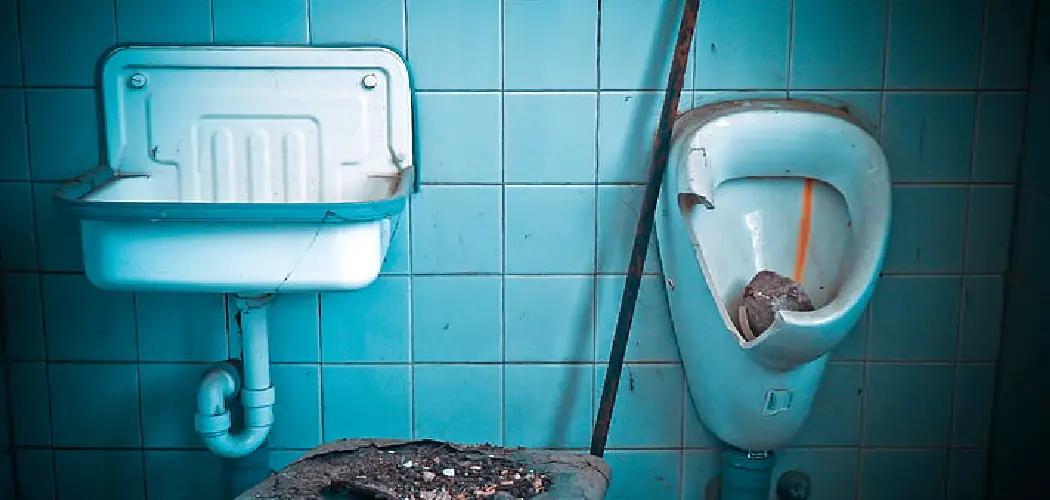Are you tired of seeing those unsightly rust stains in your toilet bowl? Rust can build up over time, especially if you have hard water or old plumbing. But don’t worry; removing rust from your toilet bowl is an easy and inexpensive task.
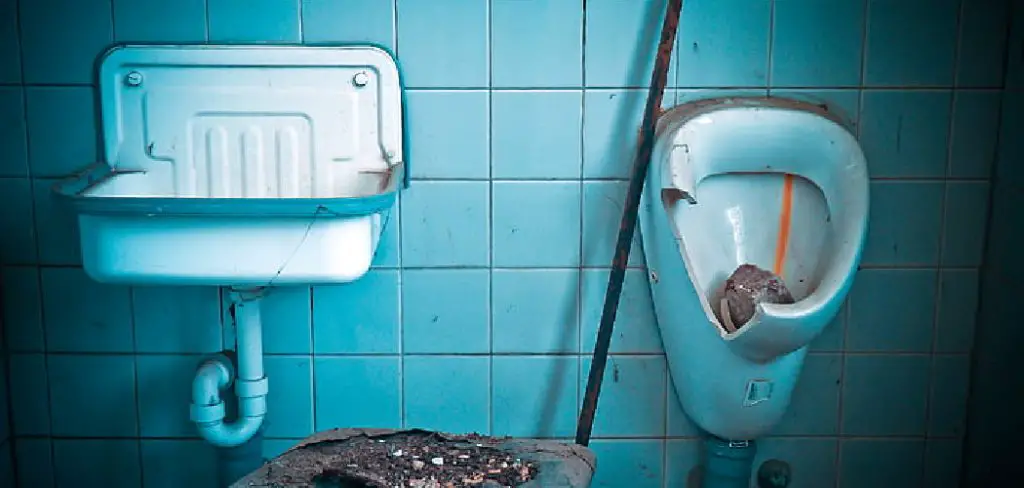
How to remove rust from toilet bowll is an essential task for maintaining both the hygiene and appearance of your bathroom. Over time, rust stains can develop due to various factors, such as the corrosion of plumbing fixtures or high iron levels in the water supply. Not only can these unsightly stains be embarrassing, but they can also lead to further damage if left untreated.
In this guide, we will explore effective methods and products for eliminating rust stains from your toilet bowl, ensuring it remains clean, fresh, and inviting for your household and guests alike.
What Will You Need?
Before we get into the methods, let’s look at the supplies you will need to effectively remove rust from your toilet bowl. You may already have some of these items in your household, making this process even more accessible and budget-friendly. The necessary supplies include:
- White vinegar
- Baking soda
- Lemon juice
- Borax
- A pumice stone or steel wool pad (for tougher stains)
- Rubber gloves
- Protective eyewear
Now that you have gathered your materials, let’s explore some practical methods for removing rust from your toilet bowl.
10 Easy Steps on How to Remove Rust From Toilet Bowl
Step 1. Prepare the Area
Before you begin, ensure that the area around the toilet is clear. Remove any items from the tank lid and surrounding surfaces. Having toilet paper handy for spills is also a good idea. Make sure to wear rubber gloves and protective eyewear to shield yourself from potential splashes of cleaning agents.
Step 2. Apply Vinegar and Baking Soda
Begin this step by directly pouring two cups of white vinegar into the toilet bowl. The acidity of vinegar is a powerful agent for tackling rust stains. Allow the vinegar to sit for a few minutes, giving it time to penetrate and loosen the rust. Next, sprinkle approximately one cup of baking soda around the inside of the bowl.
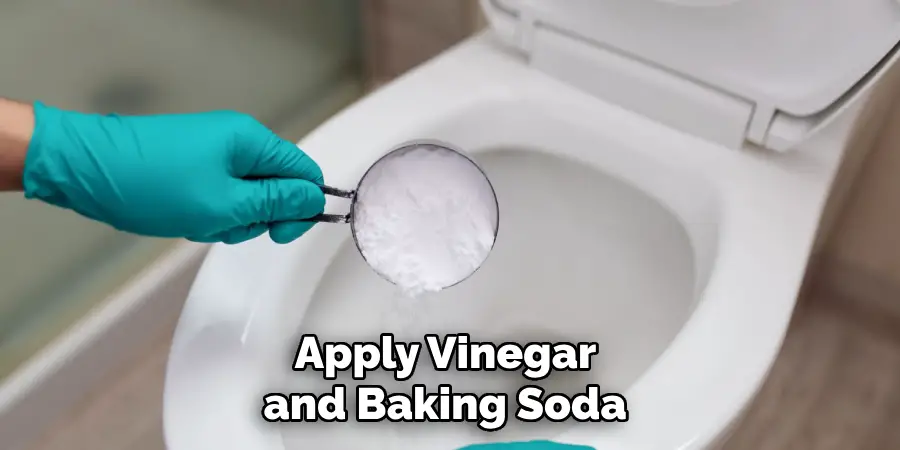
Once the baking soda is added, you will notice a fizzing reaction as the vinegar and baking soda interact. This effervescent reaction further aids in breaking down the rust particles and loosening them from the toilet bowl’s surface.
After a brief period of fizzing—typically around 10-15 minutes—use a toilet brush to scrub the sides of the bowl vigorously. Pay special attention to any areas with stubborn rust stains, as the combination of vinegar and baking soda will soften them, making them easier to scrub. Ensure that you reach below the waterline and under the rim, where rust often accumulates.
Once you’ve cleaned thoroughly, flush the toilet to rinse away the cleaning mixture along with any dislodged rust debris. This method not only reduces the appearance of rust stains but also leaves your toilet bowl smelling fresh and clean. Repeat the process for particularly stubborn stains that may require extra attention.
Step 3. Use Lemon Juice and Borax
If rust stains persist after the vinegar and baking soda treatment, lemon juice and borax can be an effective alternative. Start by pouring about half a cup of lemon juice into the toilet bowl, using its natural acidity to help break down rust.
Next, sprinkle around one cup of borax into the bowl. Allow this mixture to sit for about 30 minutes to an hour, giving the lemon juice time to work on dissolving the rust and the borax to act as a gentle abrasive. After waiting, use a toilet brush to scrub the bowl thoroughly, focusing on the rust stains.
Finally, flush the toilet to remove the mixture and any remaining rust particles, ensuring your toilet bowl appears spotless and fresh. If needed, repeat this step until the stains are fully removed.
Step 4. Use a Pumice Stone
For those stubborn rust stains that refuse to budge, a pumice stone can be your best ally. Wet the pumice stone to prevent it from scratching the porcelain surface of the toilet bowl. Gently rub the stone over the rust stains, applying light pressure as you scrub.
The abrasiveness of the pumice stone will not only lift the rust but will also help polish the bowl’s surface. Keep the stone and the area you are working on wet to maximize its effectiveness and prevent any damage. Once you’ve scrubbed away the stains, flush the toilet to clear out any debris and reveal a cleaner, shinier bowl. This method benefits areas below the waterline where stains tend to be more tenacious.
Step 5. Try Steel Wool for Tough Stains
If the pumice stone hasn’t entirely eradicated the rust stains, you should resort to steel wool. Choose a fine-grade steel wool pad to minimize the risk of scratching the porcelain. Wet the pad and gently rub it on the rusty areas of the toilet bowl, using a delicate approach to avoid damaging the surface.
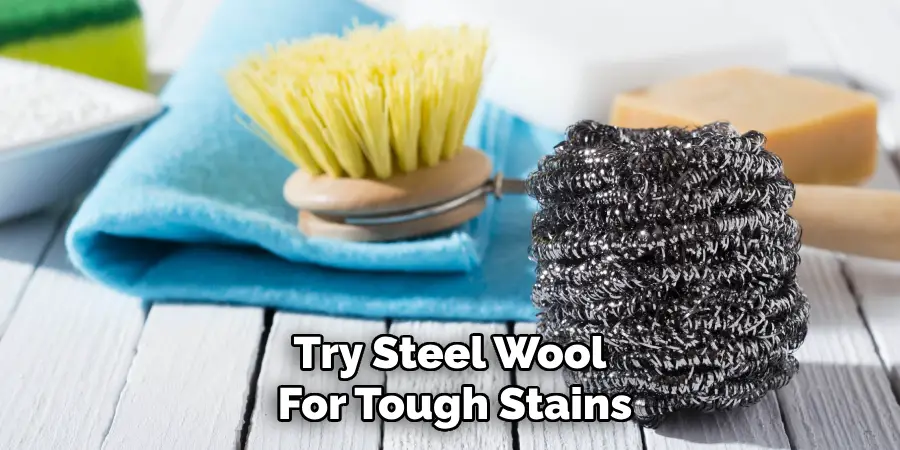
Applying just enough pressure to lift the rust without scratching is crucial. After scrubbing, flush the toilet to remove any residual particles and evaluate the results. If necessary, repeat this step until the stains are completely gone.
Step 6. Use Commercial Rust Remover
Should home remedies not yield the desired results, consider using a commercial rust remover formulated explicitly for toilets.
Follow the manufacturer’s instructions for application, typically pouring the product into the toilet bowl and allowing it to sit for a specified duration.
After waiting, scrub the bowl with a toilet brush and flush to clear away the cleaner and rust. These products can be highly effective but should be used with caution and proper protective gear, as they may contain harsh chemicals.
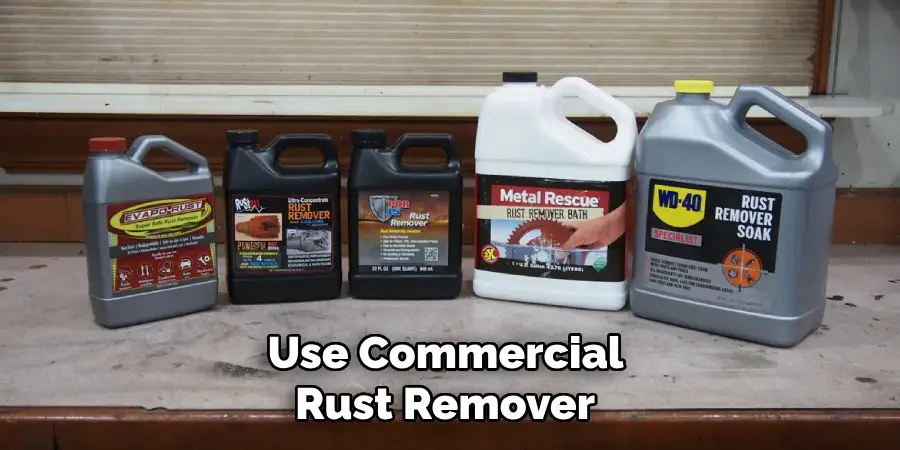
Step 7. Preventative Measures
Once your toilet bowl is clean and rust-free, it’s important to implement preventative measures to keep it that way. Consider using a water softener to reduce the iron content in your water supply, as high iron levels can lead to rust buildup.
Additionally, regularly cleaning your toilet with vinegar or a specialized toilet cleaner can help inhibit the formation of rust stains. Regular maintenance is key to ensuring a sparkling, rust-free toilet bowl for the long term.
Step 8. Regular Maintenance
To maintain a rust-free toilet bowl, establish a routine cleaning schedule. Aim to clean your toilet at least once a week using a gentle cleaner or a mixture of vinegar and baking soda. This regular upkeep can help prevent new rust stains from forming and keep your toilet looking fresh.
Additionally, check for leaks or rust spots around the tank and ensure that your plumbing is in good condition. Addressing any potential issues early on can save you time and effort in the future, ensuring your toilet remains clean and rust-free for years to come.
Step 9. Address Any Underlying Issues
If you continue to experience rust stains in your toilet, it may indicate a more significant issue with your plumbing or water supply. Inspect your pipes for any signs of corrosion or leaks, which can contribute to rust buildup over time.
Additionally, consider having your water quality tested to determine if high levels of iron or other contaminants are present. If issues are identified, consulting a plumber or water specialist may be necessary to rectify the situation. By addressing underlying problems, you can help ensure that your toilet stays clean and rust-free in the long run.
Step 10. Educate Household Members
To maintain a rust-free toilet and ensure effective cleaning practices, educating all household members on the importance of cleanliness and maintenance is essential. Discuss the proper usage of cleaning products and the significance of regular inspections. Involve everyone in the cleaning routine, making it a shared responsibility.
By promoting awareness and good habits among family members, you can cultivate an environment that values cleanliness, ultimately extending the life of your toilet and reducing the occurrence of rust stains. Regular discussions about preventive measures and cleaning schedules can further reinforce these practices, ensuring that everyone contributes to a sparkling, well-maintained toilet bowl.
By following these steps, you can effectively remove and prevent rust stains in your toilet bowl, ensuring a clean and hygienic bathroom.
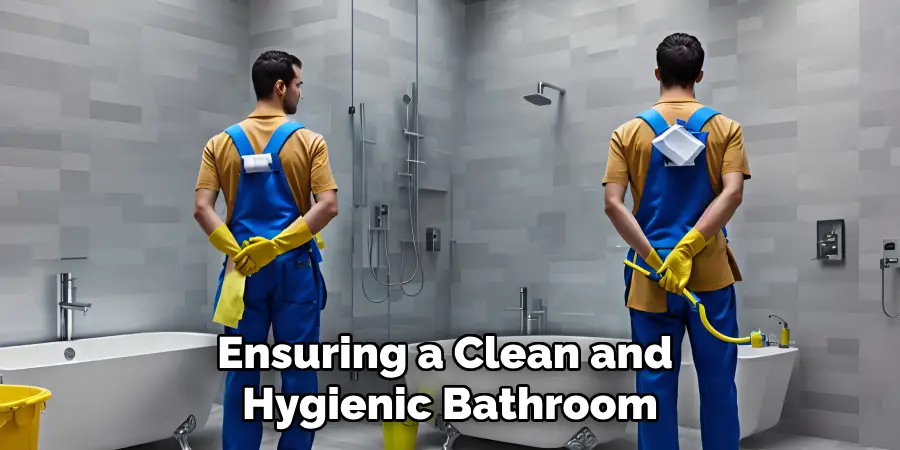
Conclusion
In summary, how to remove rust from toilet bowl is achievable through a combination of effective cleaning techniques and regular maintenance practices. By utilizing methods such as gentle abrasives, natural solutions, and commercial products when necessary, you can eliminate existing rust stains. Implementing preventative measures, establishing a consistent cleaning routine, and addressing any underlying plumbing issues are crucial steps to avoid future rust buildup.
Furthermore, fostering a shared responsibility among household members promotes a cleaner bathroom environment and equips everyone with the knowledge to maintain the toilet effectively.
Hopefully, these tips and steps will help you keep your toilet bowl free of rust stains, providing a more pleasant and sanitary experience. So don’t let rust ruin your toilet bowl – take action today to restore its shine and prevent future stains! Happy cleaning!

